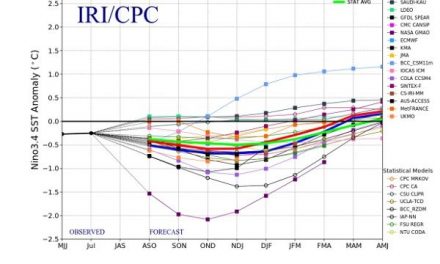
15 November 2013
 What happened?
What happened?
That computer models have taken over the production of day-to-day weather charts has become an established fact.
Such models rely on a regular, constant inflow of data from observation stations, satellite images and more recently automatic stations both on land and at sea (buoys).
Observational work at manned weather stations has unfortunately declined.
Satellite detail does seem to be selective in what comes through in ranges of clarity.
Automatic stations require close (on hand) monitoring. Buoys, away from the dustiness of land, come through quite well. But it all boils down to accuracy.
Currently it seems that this standard comes short.
According to satellite imagery quite widespread showers should have occurred across parts of Namibia while actual detail indicates otherwise.
In this week, the persistent presence of an active moist air band stretching from mid-Angola eastward offered a viable source from which middle layer cloud developed yet rainfall was scant.
Moist air advection across much of Namibia remains well supported by a mid-layer anticyclonic core sitting just above the moist air band at some 17000 to 20000 feet.
Moist surface (above ground level) air fed the heat low pressure trough (present from Caprivi south across Botswana) but obviously was unable to penetrate our air space.
Synoptic patterns as presented on the daily weather charts maintain the bias toward their southerly orientation.
The cut-off vortex development (as the shallow ridge advances east) is still the middle air feature and does much to assist the northwesterly flow. This remains a promising feature for the further outlook!
What’s coming?
With two quickly developing vortex patterns already seen in the past four days, the next one forms by Friday and drifts eastward during the week end.
These continue to keep the northwesterly airflow in place but their rapid build and departure restrict any deep flow of cooler air entering our air space, hence no undercutting.
The core anticyclone provides successive ridges to feed lower level moist air toward the equally persistent low pressure trough across mid-continent.
Intermittent intrusion is expected over the weekend into next week across the northeastern half of Namibia. Projected rainfalls are limited in intensity as lower level inflow barely seeps through.
Heat keeps the surface trough undisturbed: typical November!










































